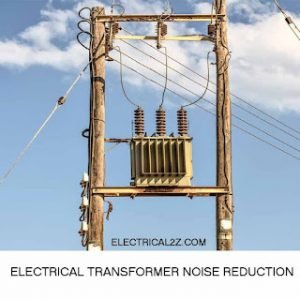Drying of Electrical Transformer Insulation | New transformers are almost invariable sent fully dried out, filled with oil and fitted with a breather. Sometimes large transformers are sent out without oil, with the cooling coils separately packed, to reduce weight and facilitate handling. The cooling tube outlets are the sent blanked off sealed, the tank itself being filled with dry gas, either air or nitrogen under pressure, so that the windings may be perfectly dry when received; it will then be necessary only to mount the cooling tube and fill the tank with good transformer oil, preferably by the vacuum suction process. Drying out period in the field will then be greatly reduced. Read the article about transformer noise reduction and operation too.
Drying of Electrical Transformer Insulation
The main problem in drying out a transformer is not so much drying the oil-this is quite easily done by passing it twice or thrice through a suitable filter-as the removal of moisture the windings. This is quite a time consuming process in a new transformer to be commissioned to 3 or 4 weeks for a large unit. And throughout this period the temperature has to be maintained between 800 to 850 C irrespective of ambient air temperature variations.
A vital condition to be ensured throughout the period is that the oil temperature never exceeds the limit of 900 C, as it may seriously damage the insulation. The amount of heat radiated from a transformer tank is quite appreciable especially in cold cover round the transformer if it is installed outdoors and also to lag the sides and the cooling tubes to reduce the radiation losses.
In electrical substation having a large number and different types of transformers which have to be periodically dried out, it is worthwhile installing a purifier in the substation premises and providing a piping system permanently so that purification of the oil could be carried out on any transformer at any time desired, from the central plant, by making just a few flexible conduit pipe connection. Incidentally purification of the oil may proceed while the transformer is in service on light load. Coming to the methods of drying out, there are basically two i.e. with the tank dry or with the tank filled with oil.
With the tank dry i.e. with the core and winding in position but without oil, the heat required for drying may be produced in two ways:
(i) By blowing in hot air through the transformer tank.
The air is blown into the tank through a suitable opening at the bottom of the tank such as the drain pipe or radiator pipe outlet. An air outlet should be left at the top by removing the explosion vent or manhole cover. The inlet air should be at a temperature not less than 850 nor more than 1000 C. Some manufacturers offer special driers comprising a centrifugal type air blower with built in air filters and heating elements of 15 KW capacity, which will be sufficient for a tank capacity of 10 m3 (350 CU.FT.).
The outlet air temperature should be not less than 650 to 750 (1400 to1670F). This method is quite reliable and the drying time with reasonably dry air and ambient temperature, is about 4 days for an 11kV unit and 15 days for large 220 kV unit. This advantage of this method is that the oil is not subjected to high temperatures for long period as in other methods. Moisture in the windings is quickly removed because of low humidity of hot air.
(ii) By short circuiting the secondary windings and applying a reduced voltage on the primary, as in the heat run test. The top cover should be kept open for free ventilation. This is not entirely a satisfactory method because the temperature distribution in the windings will be uneven due to absence of oil, and is not recommended except for small transformer and when there is no other means available for drying. However, this method may be adopted in conjunction With method (i) above to reduce the burden on the air heaters. The winding temperature, by the
resistance method should never be permitted to exceed 900 C.
(b) With the tank filled with oil, heat could be produced in three different ways:
(i) By short circuit method outlined above.
(ii) By circulating oil through a suitable purifying plant.
(iii) By connecting several immersion type heaters and letting them into the transformer tank.
N.B. Application of vacuum may be applied directly into the transformer tank by connecting a vacuum pump production at least 28 in. of vacuum, through a suitable outlet, provided that the tank is specially designed to withstand the full air pressure (15 lbs./sq.in.) on the exposed surfaces of the tank. Alternatively vacuum type purifiers should be used.
Final Word
Hope you understand this article about the Drying of Electrical Transformer Insulation. Incase of any doubt please comment below. Subscribe our website to get every new post update to your email. Please follow our website @ElectricianWorld.Net for future updates. Thank you for visiting our website.



